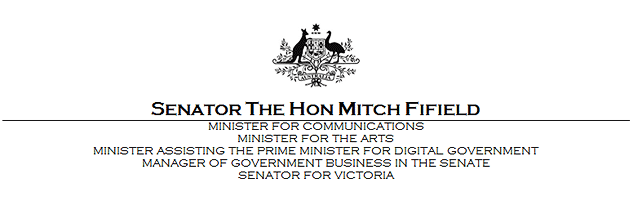1 February 2016
The Government has released its Migration Assurance Policy (MAP) to support the transitioning of existing broadband and phone services customers by limiting the disruption during the switch-over to the fixed-line national broadband network (nbn).
In urban areas and townships across Australia, the nbn is replacing Telstra’s fixed line network which is compulsorily switched off 18 months after the nbn is activated in a rollout region. To date, 154 regions around Australia have reached their compulsory disconnection date, representing a footprint of over 300,000 premises. Throughout 2016 alone, the number of regions reaching their disconnection date is expected to triple.
For the customer, the transfer to the nbn will involve the installation of new equipment, increased download speed and a predictable smooth migration experience.
The MAP statement thoroughly outlines a number of assurance principles and sets out expectations concerning the roles and responsibilities of service providers to ensure the migration process is predictable and straightforward for consumers. A smooth migration process will be essential in coming years as the nbn rollout gathers momentum. nbn‘s three-year rollout plan will expand the network footprint to include more than 9 million homes and businesses across Australia by the end of 2018.
This new policy is the result of extensive collaboration between the Australian Government, NBN Co Limited and Telstra, and informed by feedback from stakeholder consultations, industry and public submissions on the draft framework.
The MAP emphasises the importance of consistent and accurate information and data sharing between parties to make connecting to the fibre nbn trouble-free. It establishes four critical pillars which underpin the successful switch-over from Telstra’s copper and HFC networks to the NBN fixed line network.
The four pillars that support successful migration are:
· Serviceability to ensure a working service is available at the premise when an order is placed. At the time of the last election, around 30 per cent of premises declared ready to connect were not actually serviceable because the physical network had not been connected at those premises. This figure is now less than 5 per cent as nbn has implemented strict new processes to ensure more end users are ready to connect when areas go live. The remaining unserviceable premises are actively targeted by nbn for bespoke construction solutions;
· Product availability a suitable product range to meet consumer needs;
· End-user awareness and management the need for consistent and timely information and support for households and businesses; and
· Installation and activation the timely completion of orders for an nbn service.
The MAP Policy resolves the Labor government’s legacy of early rollout areas that were plagued by problems including network shortfalls which caused extended waiting times for connections; ordering system errors; and inconsistent data which led to missed appointments and occasional unexpected disconnections.
Other early migration problems that are being addressed included inappropriate equipment placement, accuracy of information from installers, and general consumer understanding about the nbn installation process.
The Government recognises the telecommunications industry’s hard work and commends its commitment to improving the migration process.
The policy and framework will be updated as needed over time, including addressing any additional migration issues as they arise and the documents are available from the Communications and Arts website at www.communications.gov.au/new-policy-guide-nbn-migration

